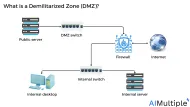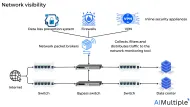Incident Response Automation in 2024: Techniques & Benefits
Cybersecurity statistics reveal that daily, there are approximately 2,200 cyber attacks, equating to an average of one cyber attack every 39 seconds. 1 As cyber threats grow in complexity and frequency, there’s a pressing demand for organizations to strengthen their cybersecurity measures. Incident Response Automation (IRA) improves conventional, manual methods of managing and responding to incidents by empowering organizations to swiftly identify, scrutinize, and counteract cyber threats with automated processes.
This article provides an in-depth exploration of incident response automation, outlining methods for implementing automation in incident response strategies and identifying key features to consider when choosing an incident response automation tool tailored to your organization’s needs.
What is incident response automation?
Incident response automation utilizes tools such as Security information and event management (SIEM) systems, orchestration platforms, and AI-driven solutions to efficiently identify, analyze, and mitigate cyber threats with reduced reliance on manual processes.
Key components of incident response automation
The key components of incident response automation typically include the following aspects:
- Automated detection: This involves the use of analytical techniques and machine learning algorithms to continuously scan and monitor an organization’s network and systems for early detection of incidents.
- Automated analysis of incidents: This stage involves an in-depth examination of the detected threat, gathering information from various components of the organization’s IT infrastructure, including security device logs and network activity. The system assesses the severity of the incident by considering various aspects, including the criticality of compromised data or systems. Following this comprehensive analysis, the system is equipped to make well-informed choices regarding the subsequent actions in the incident response process.
- Automated incident response: The automated incident response platform acts to halt the proliferation of the threat across the network by segregating systems or network segments. Security mechanisms like intrusion prevention systems are programmed to automatically filter out and block potential malicious activity. Depending on the specific characteristics of the incident, the system might also modify security protocols. Concurrently, security alerts are sent to the IT security teams and users who might be impacted.
- Security orchestration: Security orchestration involves the automated and coordinated use of various security solutions like firewalls, antivirus programs, and endpoint protection systems, along with security processes. This integrated strategy ensures that each security component contributes its distinct functions to the security framework.
- Incident playbooks: An incident playbook serves as a comprehensive guide for addressing and neutralizing cybersecurity threats. Tailored to specific security scenarios, each playbook offers step-by-step actions for responding to incidents, including system isolation, traffic filtering, and the deployment of security updates. These playbooks are designed to work in harmony with automated detection and analysis systems within the incident response framework.
- Automated reporting tools: They provide a detailed snapshot of the organization’s security environment, including information on recent cyber attacks, system weaknesses, and the efficiency of incident responses. Generated through automated reporting tools, these reports maintain uniformity and precision.
- Integration with existing systems: Incident response automation tools need to seamlessly connect with the organization’s existing security infrastructure, creating a unified platform for incident management.
How does incident response automation work?
Automated incident response tools use various technologies such as scripts, playbooks, and orchestration platforms to ingest, process and analyze data from internal and external sources. This process typically follows the following steps:
1. Detection of potential security incidents
Automated incident response tools continuously monitor for anomalies. This involves collecting vast amounts of data from network devices such as firewalls, servers, and endpoints. In this initial phase, monitoring tools such as intrusion detection and prevention systems or security information and event management (SIEM) systems are used.
2. Analysis of collected data
Once a security event is detected by the monitoring tools, security tools analyze the vast amounts of data to identify patterns and decide the severity of the incident using AI and ML.
3. Isolation of infected systems
Once the analysis step confirms that a detected event is a security incident, the affected systems are isolated from the rest of the network to limit the spread of the security incident.
4. Removing malware associated with the incident
Antivirus and antimalware solutions scan for and eliminate detected threats. This step may involve re-installing the operating system and applications, as well as recovering data from backup sources.
5. Post-Incident analysis
Automated tools examine data gathered from numerous incidents over a period to detect recurring trends and patterns that could reveal underlying systemic problems.
Why do organizations need to improve incident response?
Companies must enhance their automated incident response mechanisms to counteract emerging threats, safeguard their resources, and adhere to legal and regulatory obligations. The adoption of modern technologies such as cloud services, the Internet of Things (IoT), and mobile solutions adds complexity to their IT infrastructures.
This necessitates advanced incident response strategies capable of addressing incidents within these varied systems. Additionally, various sectors face stringent data protection regulations like the GDPR, HIPAA, or PCI-DSS, which mandate prompt notification of security breaches.
Read more: Data breach incident response.
Benefits of automating incident response processes
Minimize the detection-response gap
Inconsistent response times to critical threats in cybersecurity pose significant problems for businesses. Automation tools enable organizations to improve threat response, helping security analysts save their time investigating false positives. Such tools continuously monitor network traffic and other data sources, allowing for dynamic response actions based on the specifics of the incident.
Once a security thread is identified, automated systems such as a SOAR tool execute predefined threat response actions, also known as security playbooks. Automated incident response reduces the workload on the security team, allowing analysts to react swiftly and effectively to cyber threats.
Reduce alert fatigue
Incident response platform eliminates recognized false positives by leveraging historical threat data and insights from threat intelligence to differentiate between harmless activities and potential security risks. Tailored to the unique environment of the organization, it also diminishes the quantity of notifications by excluding those that are of minor significance or not pertinent. The system then examines the remaining alerts through automated mechanisms and the application of machine learning techniques. Based on their potential impact, these alerts are categorized into various levels of severity, such as low, medium, high, or critical.
Automate ticket generation and management
Once the automated incident response solution detects a potential security incident, it can automatically create and manage tickets in the incident management system.
Reduce MTTD and MTTR
Automated incident response platforms are capable of distributing tasks, issuing notifications, and elevating incidents when necessary. By reducing the Mean Time to Detect (MTTD) and the Mean Time to Repair (MTTR), these automated systems lessen the potential consequences of security breaches.
Choosing the right automated incident response tool
- Integration capabilities: An automated incident response tool should be able to collect data from various sources, such as logs from firewalls, alerts from intrusion detection systems (IDS), indicators of compromise (IoCs) from endpoint protection platforms, and security events from Security Information and Event Management (SIEM) systems. Integration with third party tools provides access information about emerging vulnerabilities and emerging threats.
- Orchestration and automation features: Orchestration facilitates the handling of intricate workflows, encompassing tasks like initial alert assessment, in-depth investigation, and implementation of containment measures, each requiring coordination among various tools and teams. Automation within incident response leverages technology to perform distinct activities, including the automated sorting of alerts, execution of containment measures, and carrying out of remediation actions.
- Threat intelligence support: Automated incident response solutions can integrate with external threat intelligence feeds, providing information about emerging threats.
- Scalability: The tool must adapt and maintain high performance levels, and the complexity of incidents increases.
- Compliance with regulations: Many regulations mandate the prompt disclosure of security incidents. Automated response solutions facilitate this by producing comprehensive reports on incidents, detailing the type of threat, the data compromised, the measures implemented in response, and the sequence of events that transpired. For instance, solutions deployed by healthcare entities may require tailored features to adhere to HIPAA regulations concerning the protection of patient information.
Further reading
- Top 12 Intrusion Detection and Prevention Tools in 2024
- Top 5 Network Performance Monitoring Tools in 2024
If you have any questions about incident response automation, feel free to contact us:
External Links
- 1. Jain, S. (February 8, 2024). “160 Cybersecurity Statistics 2024 [Updated]. Astra.



Comments
Your email address will not be published. All fields are required.